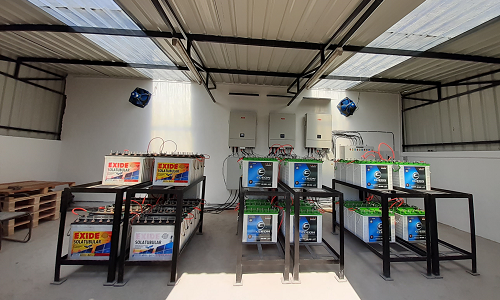N.B. Nair
Durgapur, West Bengal (ISJ): India has achieved a milestone in power distribution to masses, when the last village in the country was connected to the power grid on 28 April, 2018. But that was no guarantee of electricity to every household.
India has provided access to electricity to 700 million people between 2000-2018. Still 3.2 lakh households have been identified as in August 2020 according to information given to Lok Sabha by the Power Minister.
India’s energy demand is estimated to double by 2040, from the current installed capacity of 3,77,261MW, of which over 60 percent is thermal power.
In an effort to broad-base accessibility of electricity to remote and inaccessible regions, a laboratory under the Council of Scientific and Industrial Research (CSIR) has come up with a unique technology to ensure energy security.
The technology combines two sources of renewable energy – solar and biodiesel to set up hybrid power grids. India is bestowed with rich source of solar energy, which if tapped could save huge resources on distribution networks. Similarly, biodiesel can be produced from a wide variety of feed stocks like cooking oil, waste vegetable oil, and variety of seeds locally available across the country.
Hence, the hybridization of solar and biodiesel can help solving the energy needs of many local communities in rural India and even in urban regions.
“If we use only solar photovoltaic based mini-grids, a lot of resources have be deployed to make it work 24×7. That will make the system very costly, because we have to increase the capacity of PV to sustain the entire load during the day and sufficient energy to pump into the battery storage to work during night also,” Hanumath Prasad Ikkurti, Principal Scientist at the Durgapur-based Central Mechanical Engineering Research Institute (CMERI) told Indian Science Journal.
“If you add to it another source, which we can use during off-hours or when the solar PV is not available during nights and cloudy weather, that will be good,” he added.
CMERI scientists have developed a technology, which is capable of generating biodiesel from multiple sources or raw materials available in a particular region.
Ikkurti said, CMERI has done some simulation studies to arrive cost-benefit ratio of the hybrid power-grid. According to estimates, the cost per unit of electricity would be Rs. 13/- taking the entire capital cost also into consideration during the generation period of 25 years. “If the capital cost can be converted into a grant, the cost would come down to Rs. 8 or 9,” said Ikkurti.
The current capacity of the hybrid power grid is 50 KW, which can be scaled upto to 300 KW.
The technology is ideal for places far from the main grid, like islands, hilly places, tribal areas, besides for smart cities.
Mini hybrid power grids have multiple benefits like reduction in pollution, accessibility of electricity to remote locations, thereby increasing the economic activity of those regions and lessen the burden on utilities to provide electricity to such locations.
A long-term benefit of the hybrid power generation units using renewable sources is it contributes to mitigate global warming. Fossil fuels like coal and oil are exhaustible natural resources and it requires high temperature and pressure for their formation.
Over the last century the burning of fossil fuels like coal and oil has increased the concentration of atmospheric carbon dioxide (CO2). Approximately 40 percent of global CO2 emissions are emitted from electricity generation through the combustion of fossil fuels to generate heat needed to power steam turbines.
India has set an ambitious target of generating 175 GW of renewable energy capacity by 2020, which includes100 GW from solar, 60 GW from wind, 10 GW from bio-power and 5 GW from small hydro-power.
Image courtesy: CMERI, Durgapur


